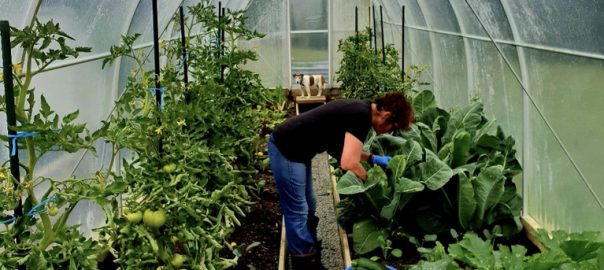Welcome to April in the Greenhouse!
Welcome to Morrifeld’s monthly garden guide where we go undercover to bring you the best tips and tasks for great greenhouse growing! April is a busy month on the greenhouse growing calendar. It’s when those of us in warmer districts are working hard to keep our
heat-lovers happy, while others in colder regions are transitioning into cool season crops.
Morrifield’s Gardening Zones
Our long maritime country is filled with exciting microclimates. That means your gardening zone may be quite different to your neighbour’s’ just a few kilometers away. Use our simple descriptions to help gauge which undercover zone sounds like you!Zone 1 (Warm Winters, Hot Summers)
Zone 2 (Mild Winters, Hot Summers)
Zone 3 (Cold Winters, Mild Summers)
Zone 4 (Severe Winters, Hot Summers)
Top Tasks Around the country
Coax!
Zones 1 and 2: If you planted new tomato, capsicum and chilli plants over summer, keep your fingers crossed for a warm winter. If you’re still coaxing along your spring sown plants, choose 3 or 4 of the healthiest to grow on into winter, and oust the rest. Older tomato vines will now be growing taller than their stakes or cages, so switch to draping them up and down over horizontal supports running the length of the greenhouse. This will create a loose ‘curtain’ that will keep foliage off the ground and fruit exposed to the sun. Pamper your over-wintering plants with a fortnightly commercial or DIY liquid feed. In wet-winter regions, move dry-loving potted plants (such as frangipani) into the greenhouse for protection.
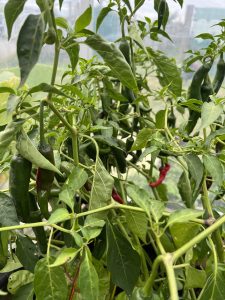
Zones 3 and 4: Leave half your heat-loving plants in the greenhouse until the last of their fruit is ripe. Pick all fruit from the remaining plants, and remove the spent plants from the greenhouse to make space for new edibles. (Note: never compost plants that are diseased.)In all but the most severe-winter regions, tender potted plants (such as citrus, lemon grass, Sichuan pepper and pelargoniums)can be moved into the greenhouse for protection (drape with frost cloth for extra protection if required).
Replenish!
All zones: Make the most of free greenhouse space by sowing and transplanting it with cool season crops while there’s still warmth in the autumn sun to get them growing quickly. But before you do, replenish soil nutrients with a top-up of fresh compost, aged animal manure, and rotted seaweed (you may need to remove a little of the existing soil to make space for this). If you’re not a pure organic grower, a scattering of slow release fertilizer pellets won’t go amiss. Stir in the added soil ingredients, and water thoroughly twice over a period of 2-3 days before planting or sowing into it.
How to harvest
Use scissors to snip off greenhouse fruit as soon as it’s ripe (don’t tug or twist the fruit as this creates a greater raw surface area for pests and disease to enter through). Removing fruit as soon as it’s ripe also takes the stress off plants that are already working hard in fewer daylight hours and reduced temperatures. Many greenhouse fruits (such as tomatoes and capsicums) will ripen indoors on a sunny window ledge. Others remain green and toxic, so always do your research before consuming unripe produce.

Greenhouse-keeping!
Many items of greenhouse infrastructure are reusable, but it pays to disinfect them first. Pop no longer required string, ties, and clips into a bucket of dilute bleach (follow instructions on the bleach bottle). Don gloves, and wipe down irrigation lines, and no longer required stake sand cages with the same solution. Dry, and store these bits and bobs undercover until spring. Gather up any items from the floor of the greenhouse (such as pots, bricks, and hand tools) as these become overwintering spots for slugs, snails and their eggs. Remove all weeds from the greenhouse floor as they tend to attract white fly in the late season. Protect your remaining harvest from autumn-hungry birds by closing your insect door or hanging a net over the opening. (Morrifield tunnelhouse growers can fit a Morrifield’s screen doors to their greenhouse, even if it didn’t come with one
originally.)
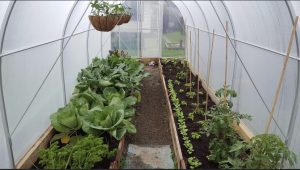
Sow me undercover now
Zones 1 and 2: baby carrot, peas (especially snow and sugar snap)beetroot, radish, spring onion, white turnip (in the ground). Broccoli, celery, celeriac, cabbage, cauli, lettuce, parsley, potato, rocket, silver beet, parcel, perpetual spinach beet, winter spinach (in seed trays or bags for transplanting or moving outdoors later

Zone 3 and 4: Coriander, leafy Asian greens (such as Chinese broccoli ‘Gai Lan’, mibuna, mizuna, pak choi, and tat soi), cool season microgreens, spring onions, ‘Tasty Tendrils’ peas (in the ground).
Transplant me undercover now
Zones 1 : Basil, dwarf & Runner Beans, lettuce, zucchini , winter tomato varieties

Zones 2, 3 and 4: Broccoli, celery, cabbage, cauli, kale, lettuce, parsley, silver beet, parcel, perpetual, rocket, spinach beet, winter spinach, woody herbs (including rooted cuttings) such as marjoram, sage, and thyme.
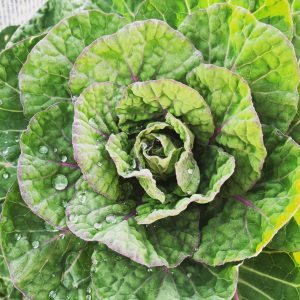
News and views
Clare Atkinson of Invercargill has been pushing the boundaries with her Morrifield’s tunnelhouse by growing heat-loving ginger! This is what she told us: “I love fresh ginger, and have always struggled to buy good quality fresh ginger from the supermarket. After help from “Mr. Google”, I decided to try growing my own, even though it was suggested Southland would be too cold. Always up for a challenge, I planted a couple of small pieces of supermarket ginger that had wee buds showing on it. After just 2 months, they now have several healthy shoots, and seem to be thriving in the warmth of my
Morrifield tunnelhouse!
Congrats, Clare, and bon appétit!
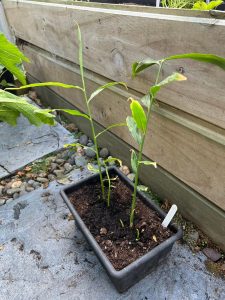
DIY Pest Bug spray
Ingredients
1⁄4 t of solid bathroom soap (not detergent or liquid)
500mls boiling water
Method
Dissolve soap in boiling water. Leave to cool before adding solution to spray bottle. Spray twice weekly as required.
DIY Liquid feed
(Use a standard 9 litre bucket to make this feed)
Ingredients
1/4 bucket of chopped seaweed
1/8 bucket nettles
1/8 bucket of comfrey leaves
1/8 bucket of aged animal manure
Fresh water
Method
Place dry ingredients in the bucket, Fill the bucket with fresh water, cover and leave for a week to steep. Strain off the liquid and dilute by half. Place solids in the compost pile.
Spray every 2-3 weeks.
Written by Diana Noonan on behalf of Morrifield Greenhouses
*Please note these are guides only
